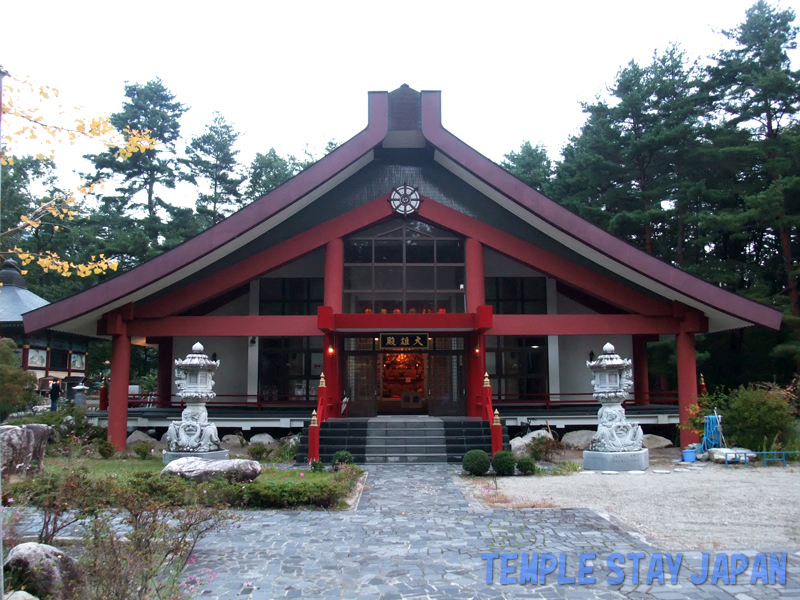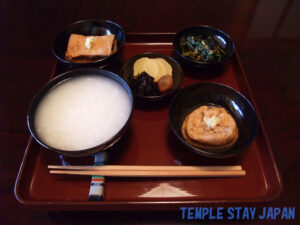Shukubo (temple stay)
It is the head temple of the Taiko sect of Korean Buddhism in Japan. It is located in the Azumino villa area, and although transportation is inconvenient, it is surrounded by abundant nature.
When we entered the temple, the staff at the shukubo welcomed us with a smile. The smell of chili peppers filled the air inside the building, which reminded me of my previous trip to Korea.
The guest room was a 6-tatami Japanese-style room with a TV, heater, and mirror. Towels, bath towels and toothbrushes are not provided.
There is a lounge on the first floor with sofas and a TV.
Kimchi hotpot dinner
For dinner we had kimchi hotpot. It was spicy, but so good! Sweating and panting, I munched on the tofu, green onions, enoki mushrooms, and other ingredients.
In addition, familiar Korean dishes such as chijimi and namul were served. The chijimi was especially delicious. It is served with a sauce containing green onions and chili peppers, and everyone praised it highly.
After dinner, I took a bath. The bath was big enough for 2-3 people to fill up. It was a hot spring, but it didn’t feel particularly special.
Morning service
The service takes place in the early morning. I woke up at 5 in the morning.
The ritual implements are struck and the sound echoes throughout the temple. This sound is said to ward off evil spirits.
When we went to the main hall, we saw Sakyamuni enshrined in the center with various Buddha statues on either side. There are many lamps on the ceiling.
As the service began, the Heart Sutra was chanted in Korean pronunciation. There were some rituals that are not often seen in Japan, such as turning one’s body to bow to the Fudo (Acalanatha) and Jizo (Ksitigarbha) statues or ringing a bell.
Temple grounds
After the service, I took a walk around the temple grounds. Next to the main hall was a Korean-style hall, brightly decorated in red and green.
The temple bells were hung close to the ground, unlike the Japanese style. Another Korean feature is the dragon-shaped bell hanger. It weighs 3.75 tonnes and was brought from South Korea.
When we were leaving, everyone at the temple saw us off. Japanese temples are nice, but Korean temples have a different kind of fun to them.



